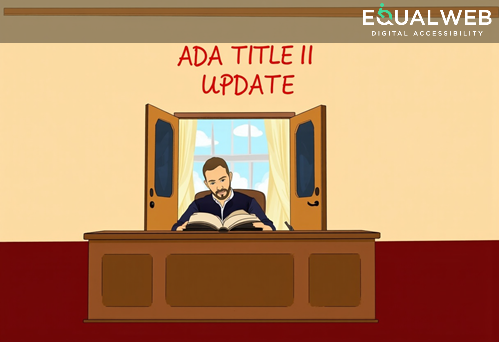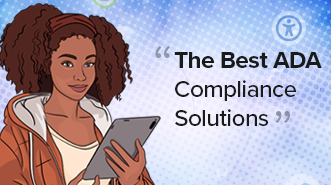What Is the WAI?
The Web Accessibility Initiative (WAI) is a project of the World Wide Web Consortium (W3C), established in 1997 to improve online accessibility for people with disabilities. Its mission is to make the web usable for everyone by developing international standards, educational resources, and technical support documents.
The WAI doesn’t enforce laws, but it builds the framework governments and companies follow. Most accessibility regulations around the world - including the
ADA,
Section 508, and
EN 301 549 - reference the guidelines produced by WAI.
Why the WAI Matters for Accessibility
Roughly 1 in 6 people worldwide live with a disability. Whether it’s visual, auditory, motor, or cognitive, those impairments can make digital access difficult when websites and tools aren’t designed inclusively.
The WAI focuses on removing those barriers by guiding developers, content creators, designers, and tool builders. When you follow their guidelines, you’re not just building accessible websites - you’re making digital experiences more usable for everyone.
Key Components of the WAI
WAI doesn’t just stop at websites. It provides a comprehensive framework that includes:
- WCAG (Web Content Accessibility Guidelines): The gold standard for accessible website and app content.
- ATAG (Authoring Tool Accessibility Guidelines): Guidance for tools like CMS platforms, ensuring authors can create accessible content.
- UAAG (User Agent Accessibility Guidelines): Standards for browsers and media players to support accessibility features.
Each component focuses on a different part of the digital experience, but together they help create a unified approach to
website accessibility.
Four Core Principles of Accessible Design
WAI standards, especially
WCAG, are built around four foundational principles. Your digital content should be:
- Perceivable: Information must be available to users in ways they can detect (e.g., text alternatives for images).
- Operable: Navigation and functionality must be accessible via multiple input methods like keyboard.
- Understandable: Content and interface behavior should be predictable and clear.
- Robust: Websites must work with a wide range of assistive technologies and future updates.
The WAI vs. WAI-ARIA
It’s important to distinguish between the WAI and WAI-ARIA. WAI is the initiative that creates standards, while WAI-ARIA attributes are a specific set of tools developers use to improve accessibility on dynamic web content. ARIA is just one piece of the larger WAI framework.
This page gives you the big-picture context - why these standards exist, how they were formed, and why they matter. For implementation details on ARIA attributes, see
our dedicated WAI-ARIA page.
EqualWeb Makes WAI Compliance Simple
The WAI`s work is foundational, but implementing its standards can be overwhelming. That’s where EqualWeb steps in. We help organizations translate the WAI`s principles into real-world compliance through:
- Automated auditing tools
- Manual remediation by accessibility experts
- Ongoing monitoring
- User feedback systems
We make it easy to meet
WCAG 2.2 requirements, without needing deep technical knowledge.
Ready to Get Started?
Whether you`re building a new website or remediating an existing one, EqualWeb helps you align with WAI-backed standards without the stress.
Contact us today to learn more about WAI-ARIA.




